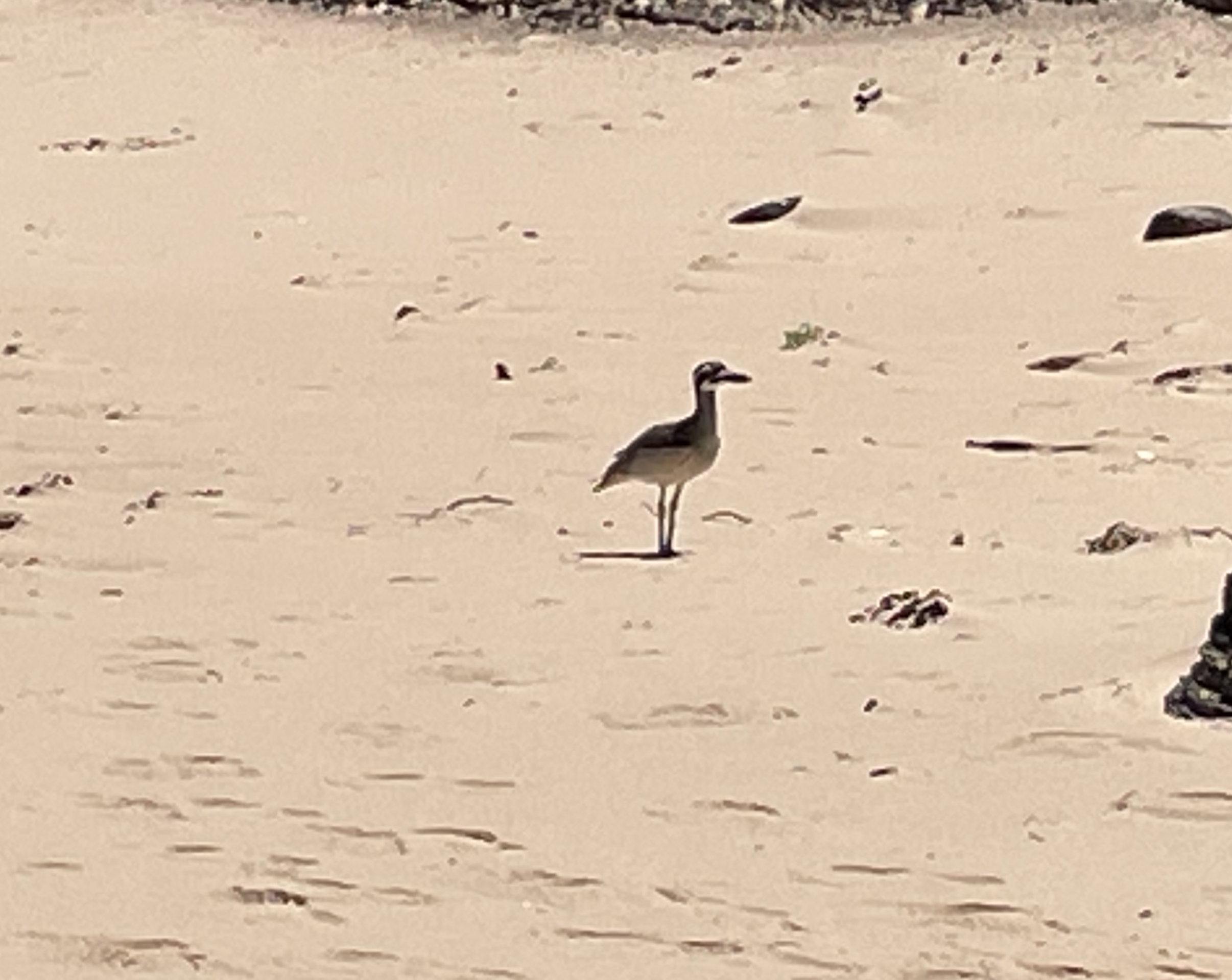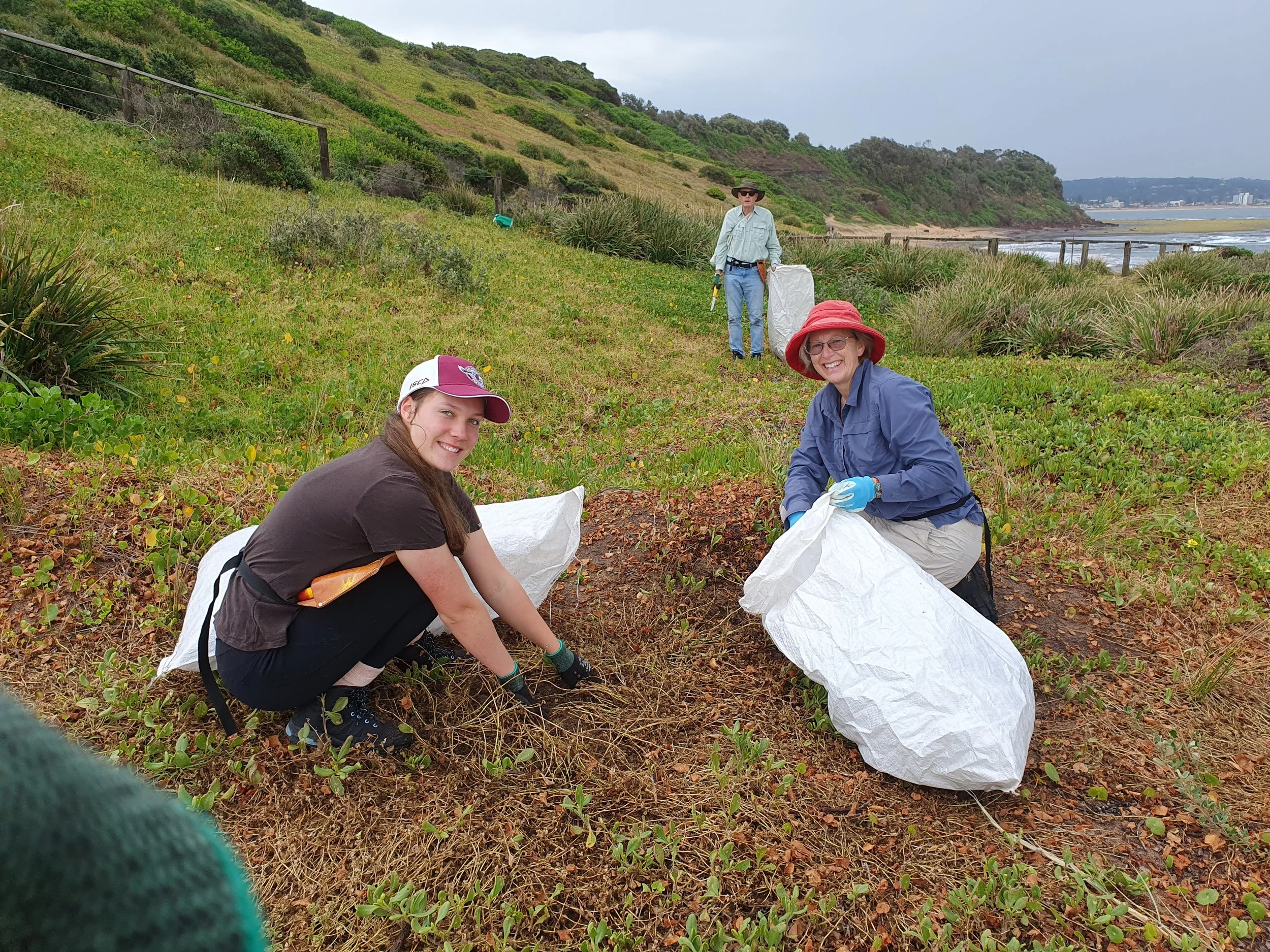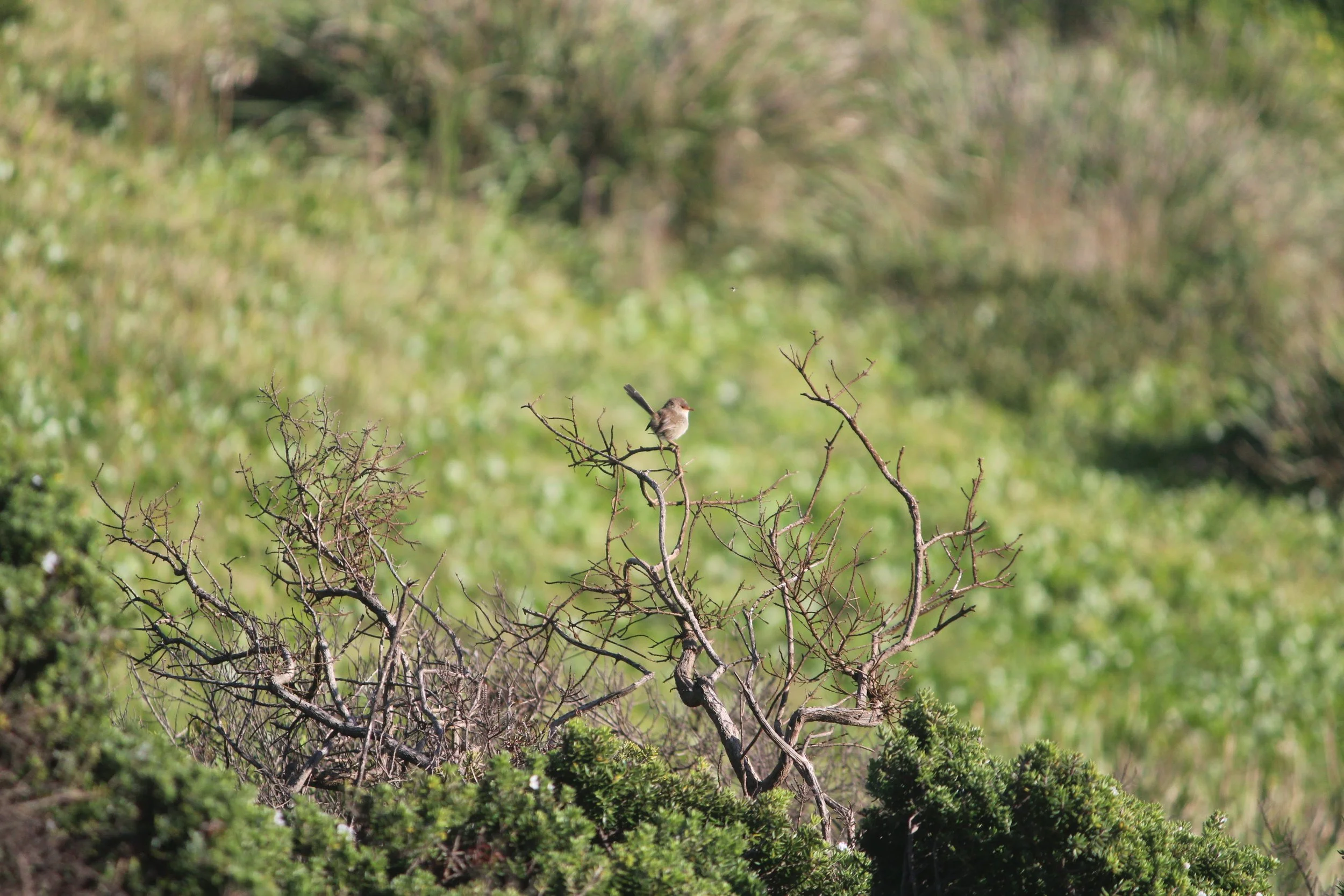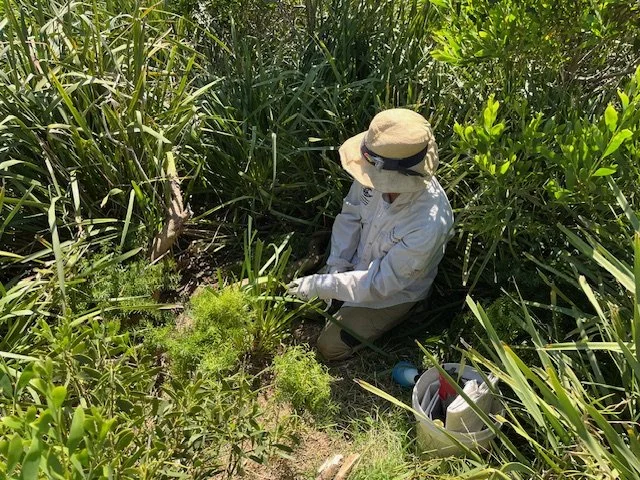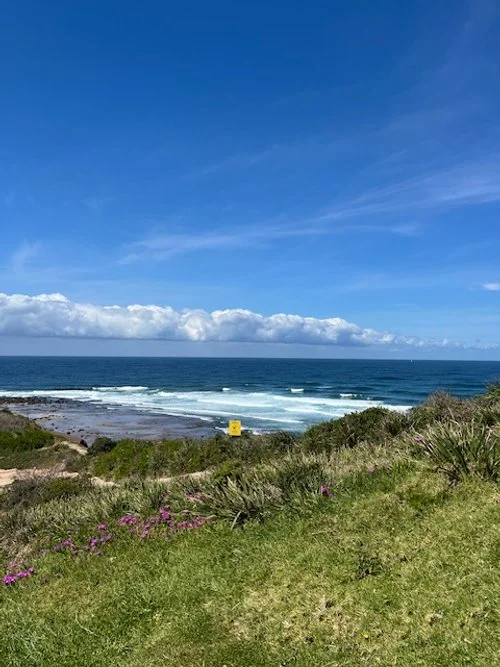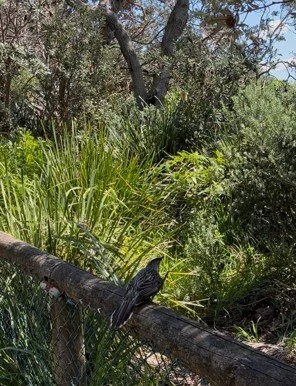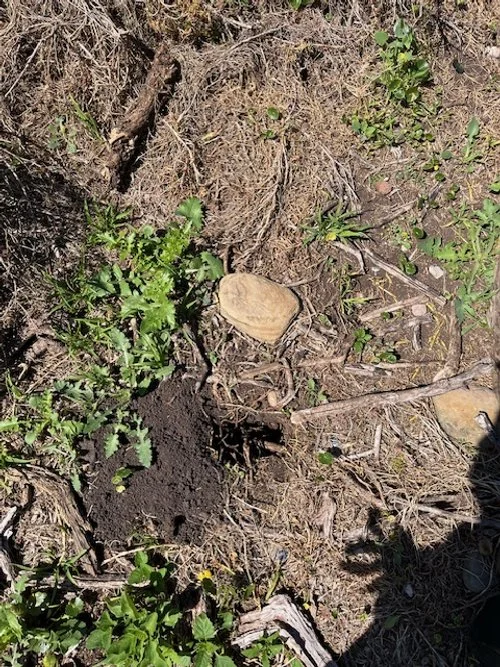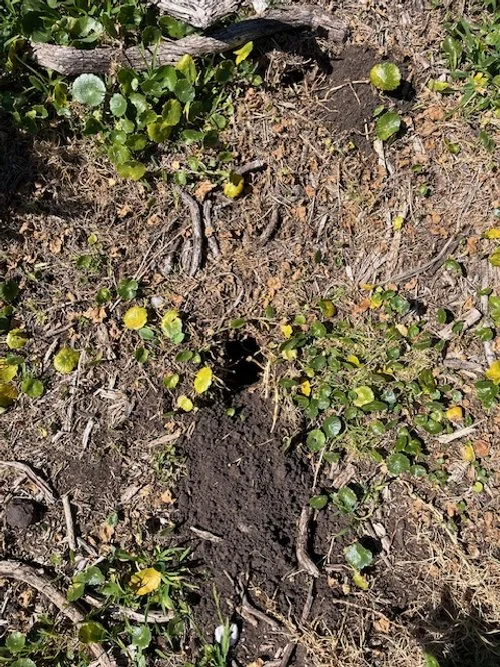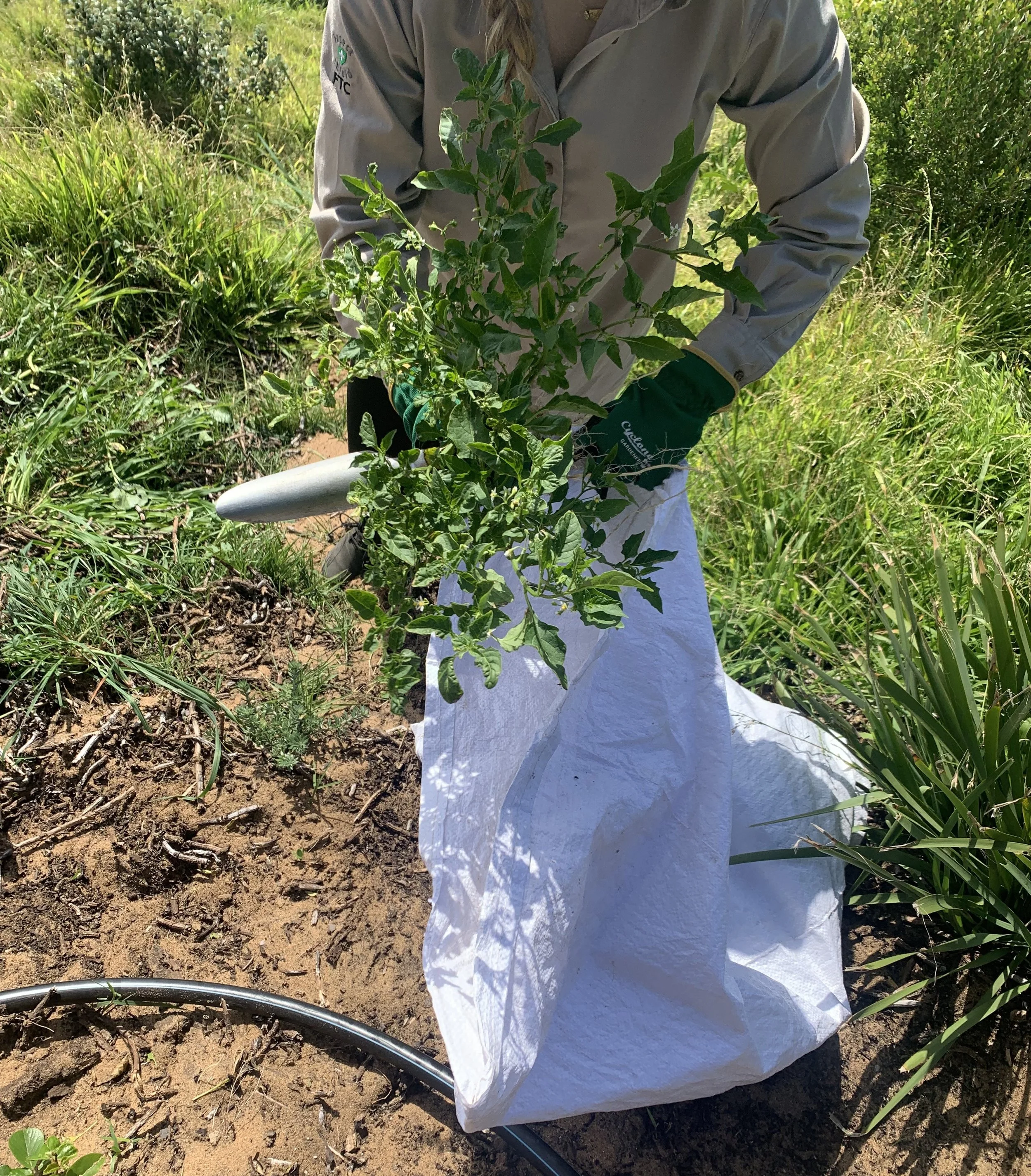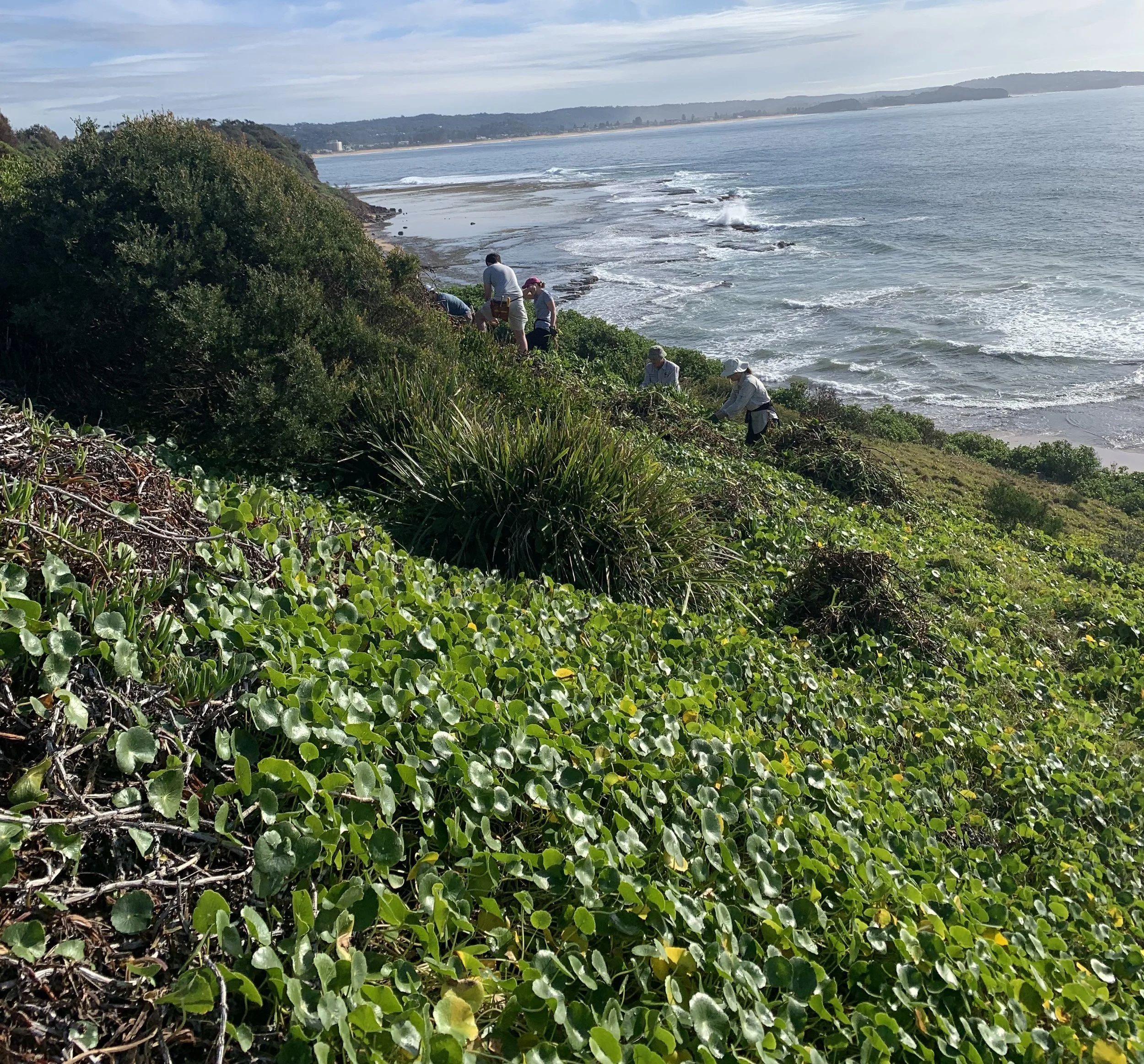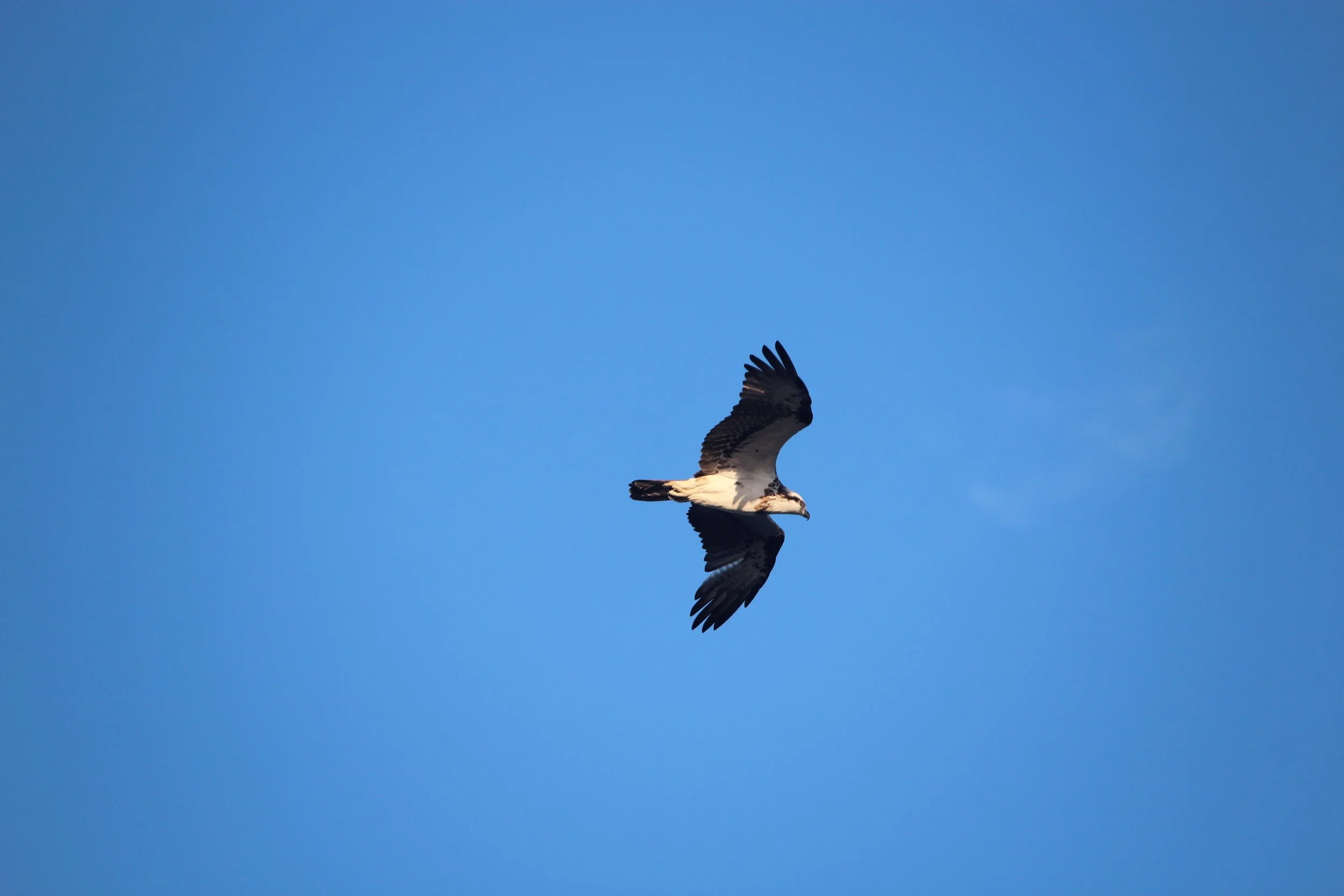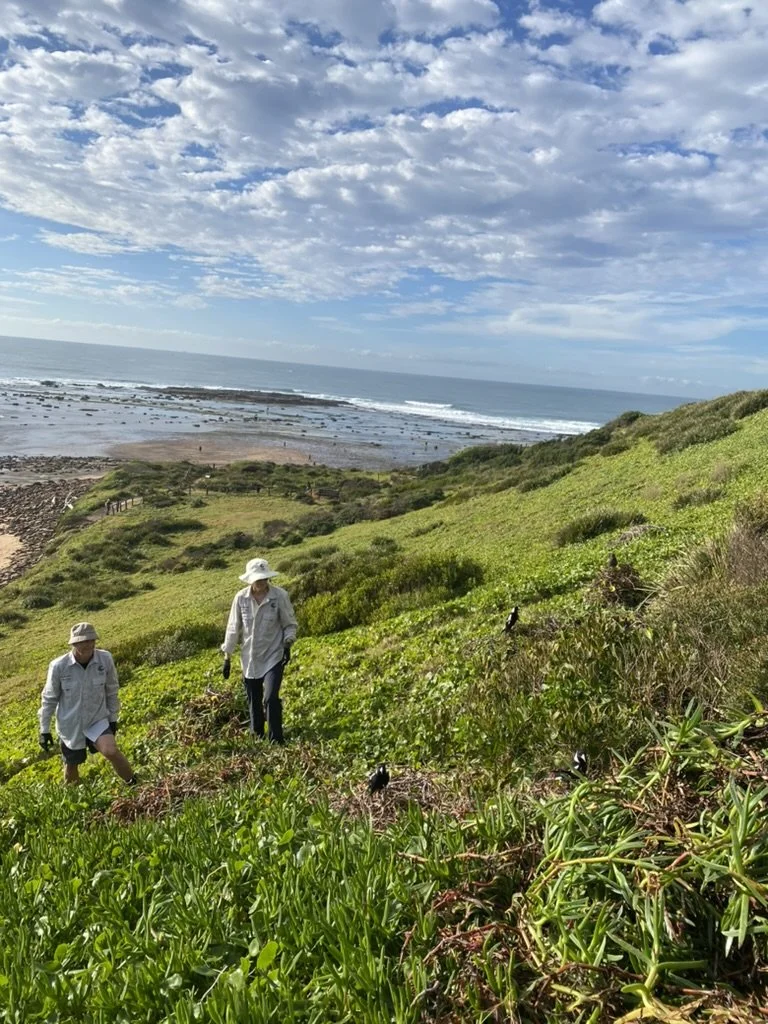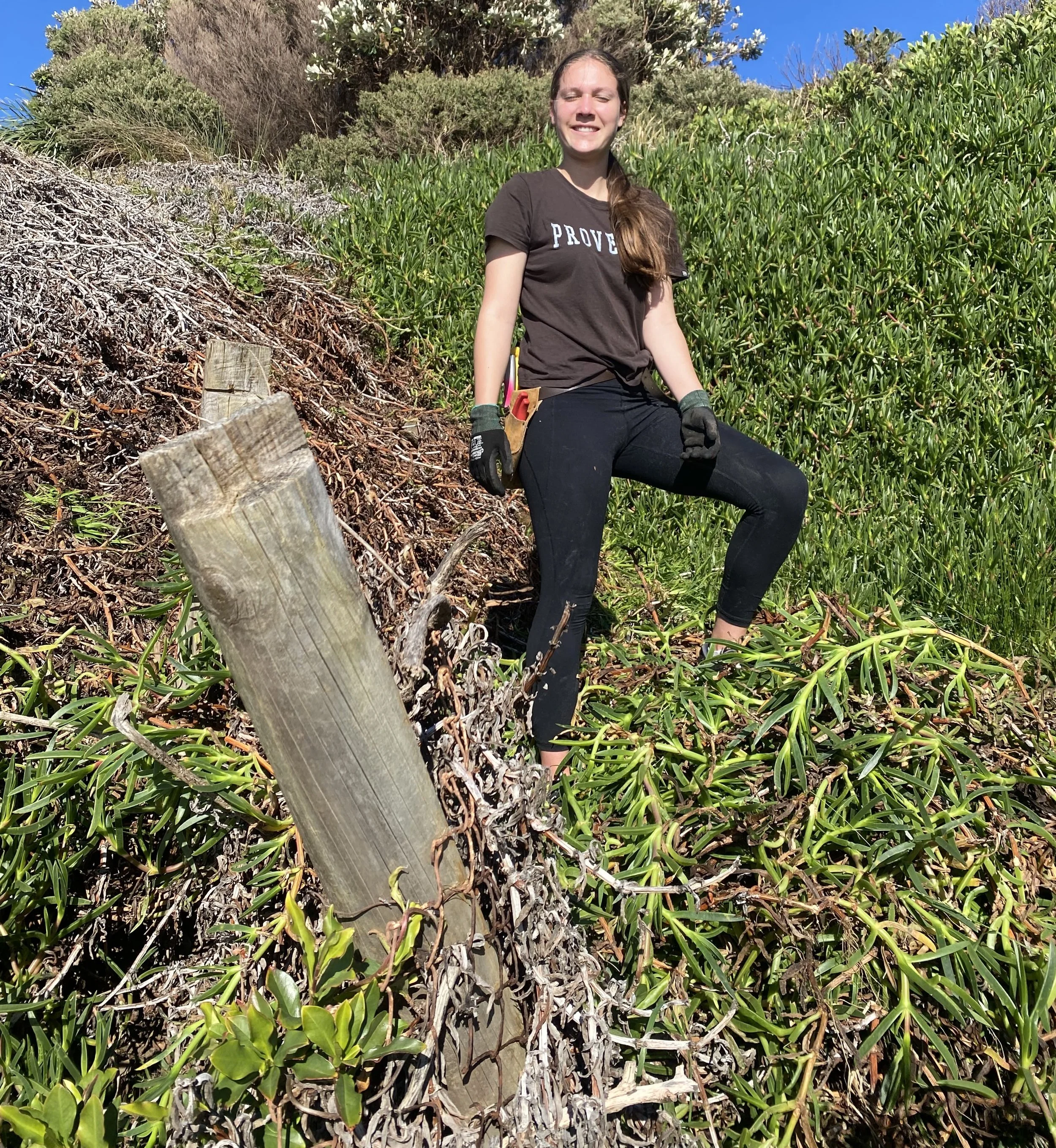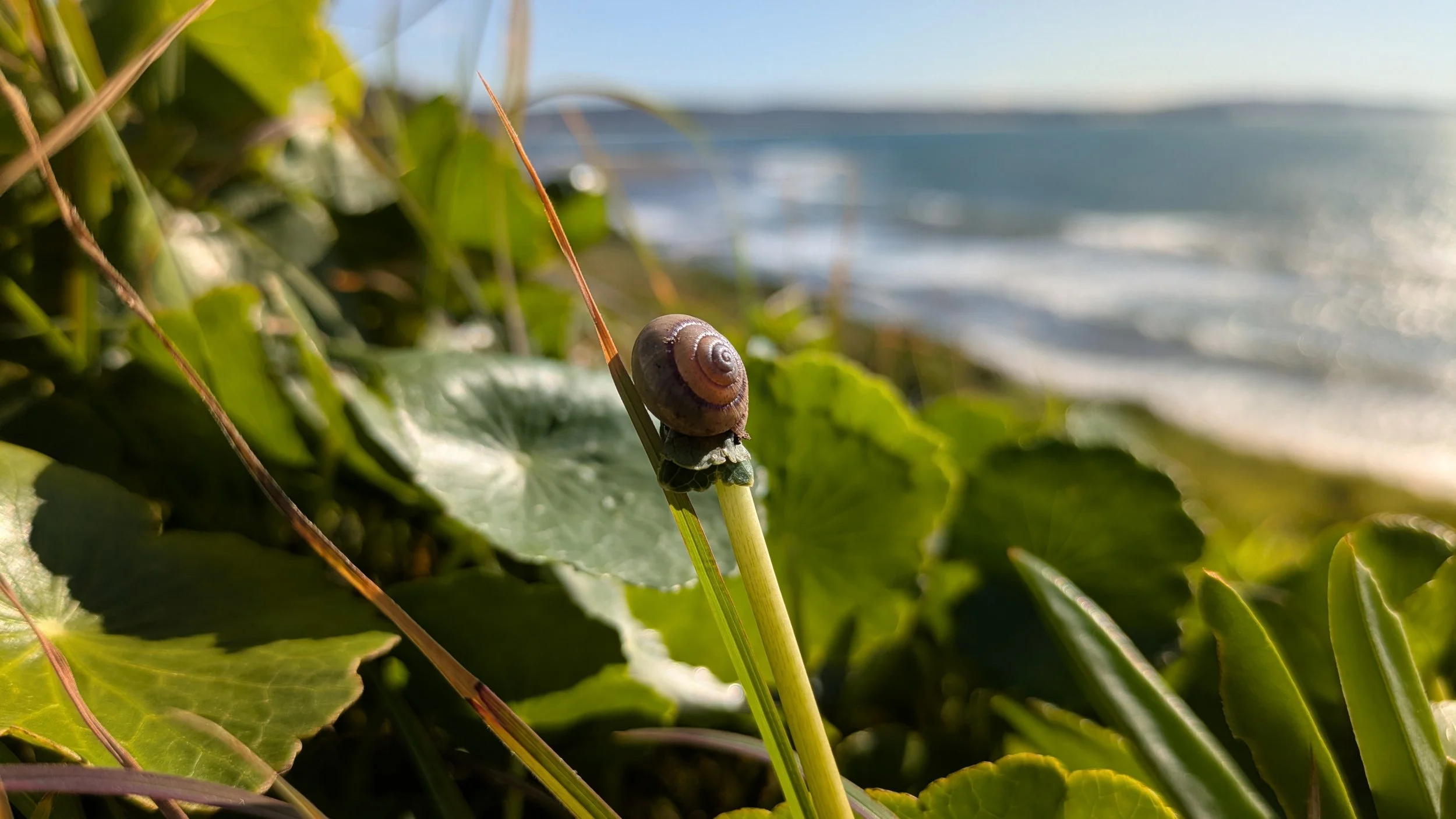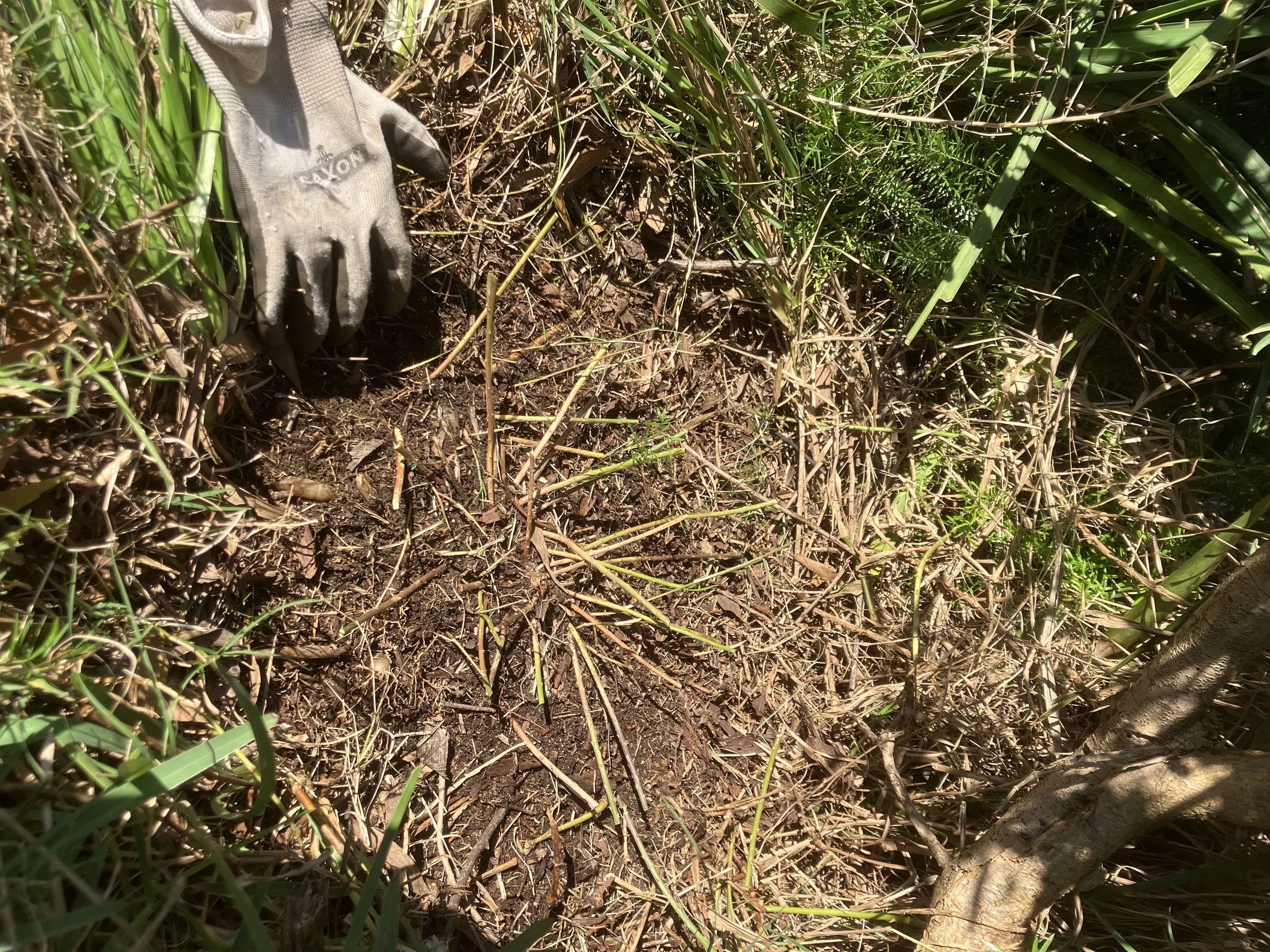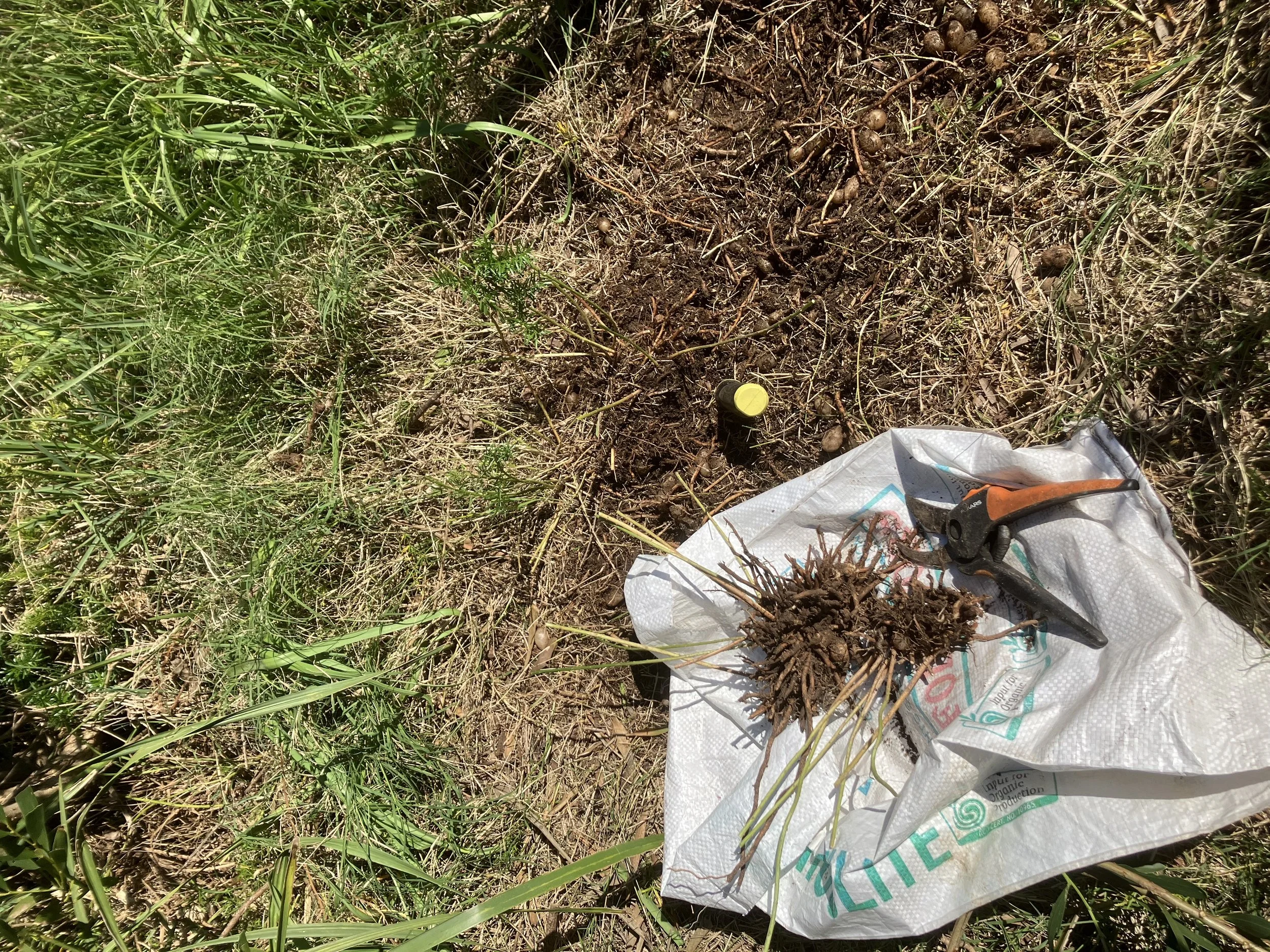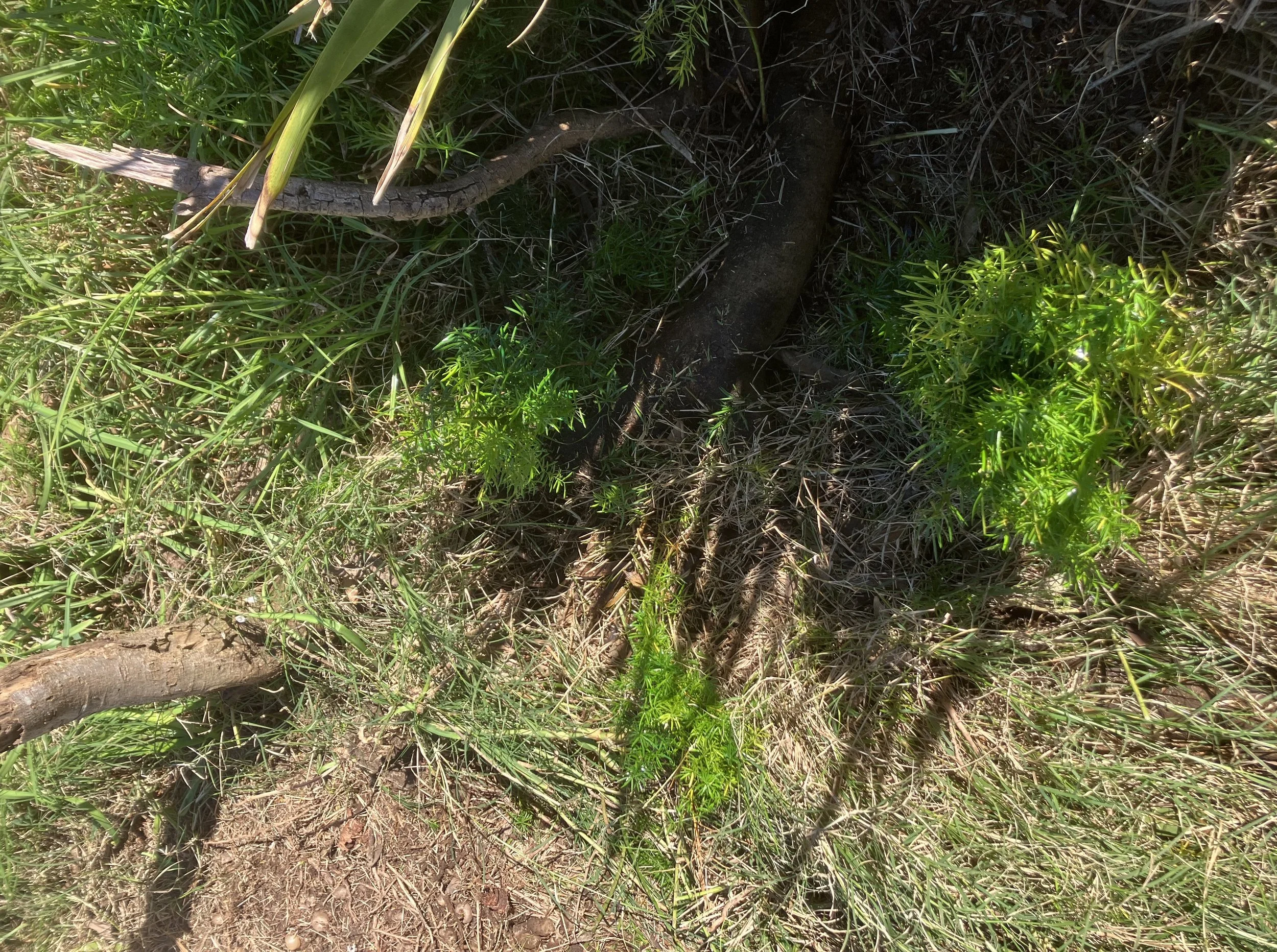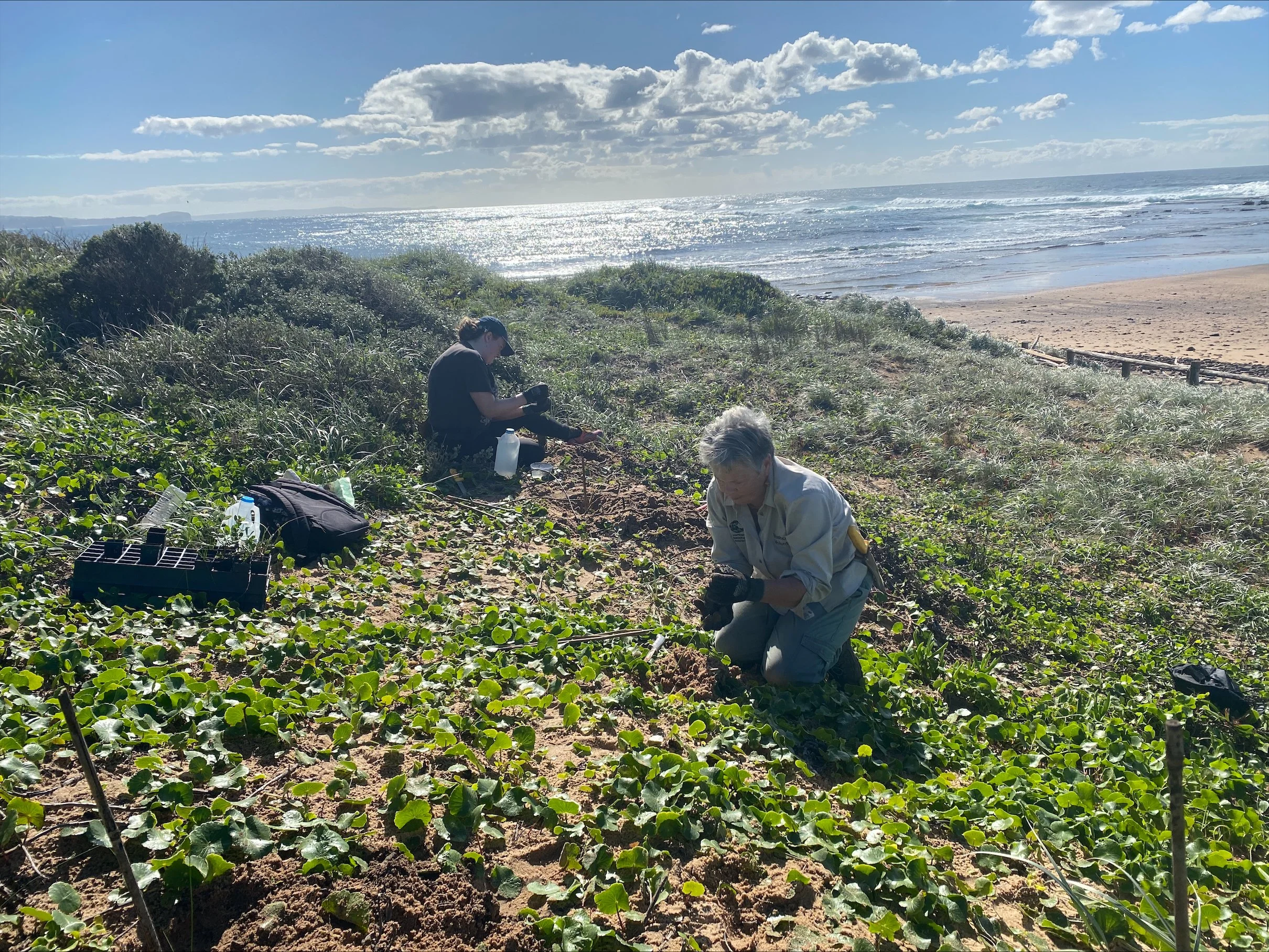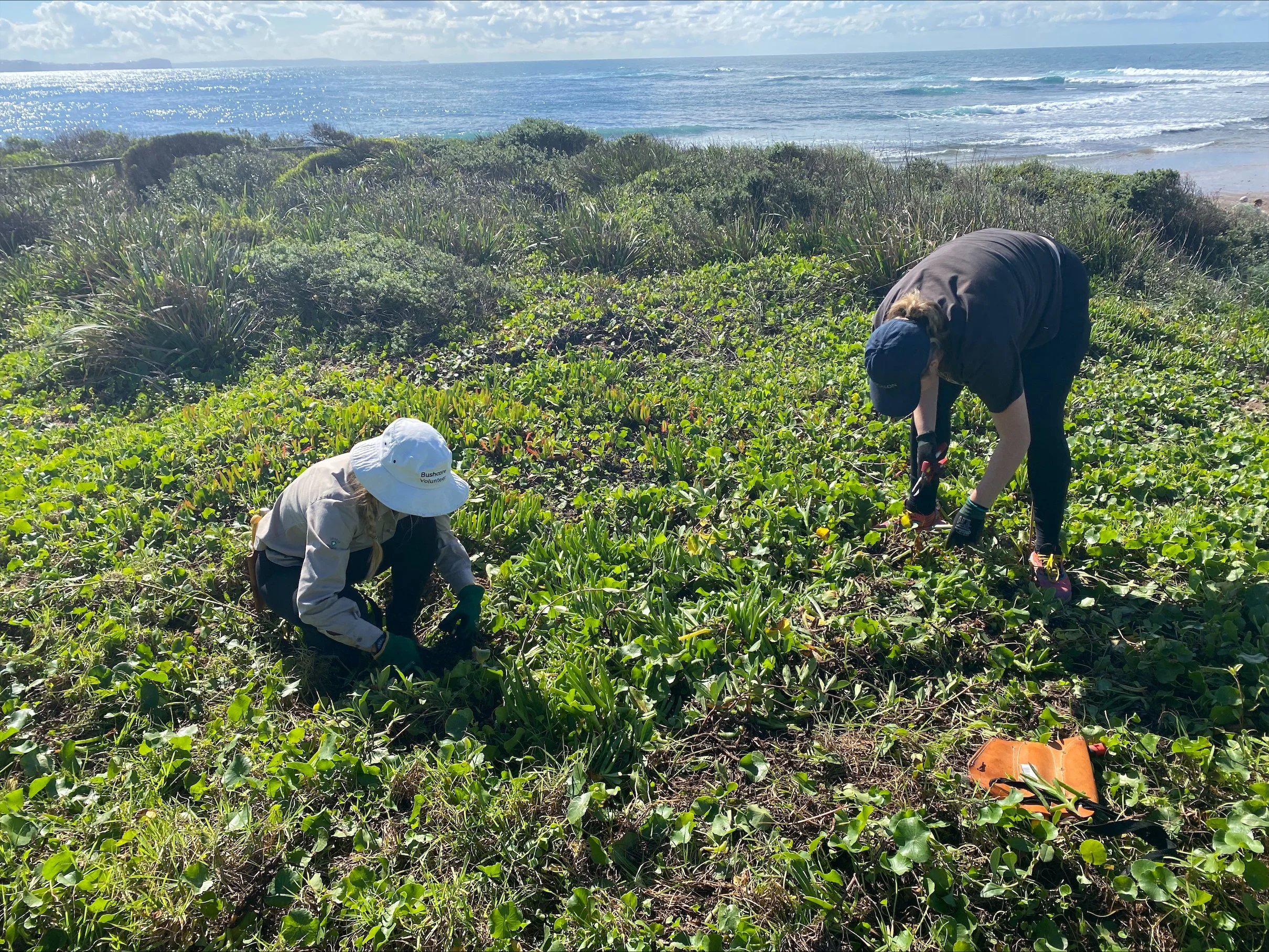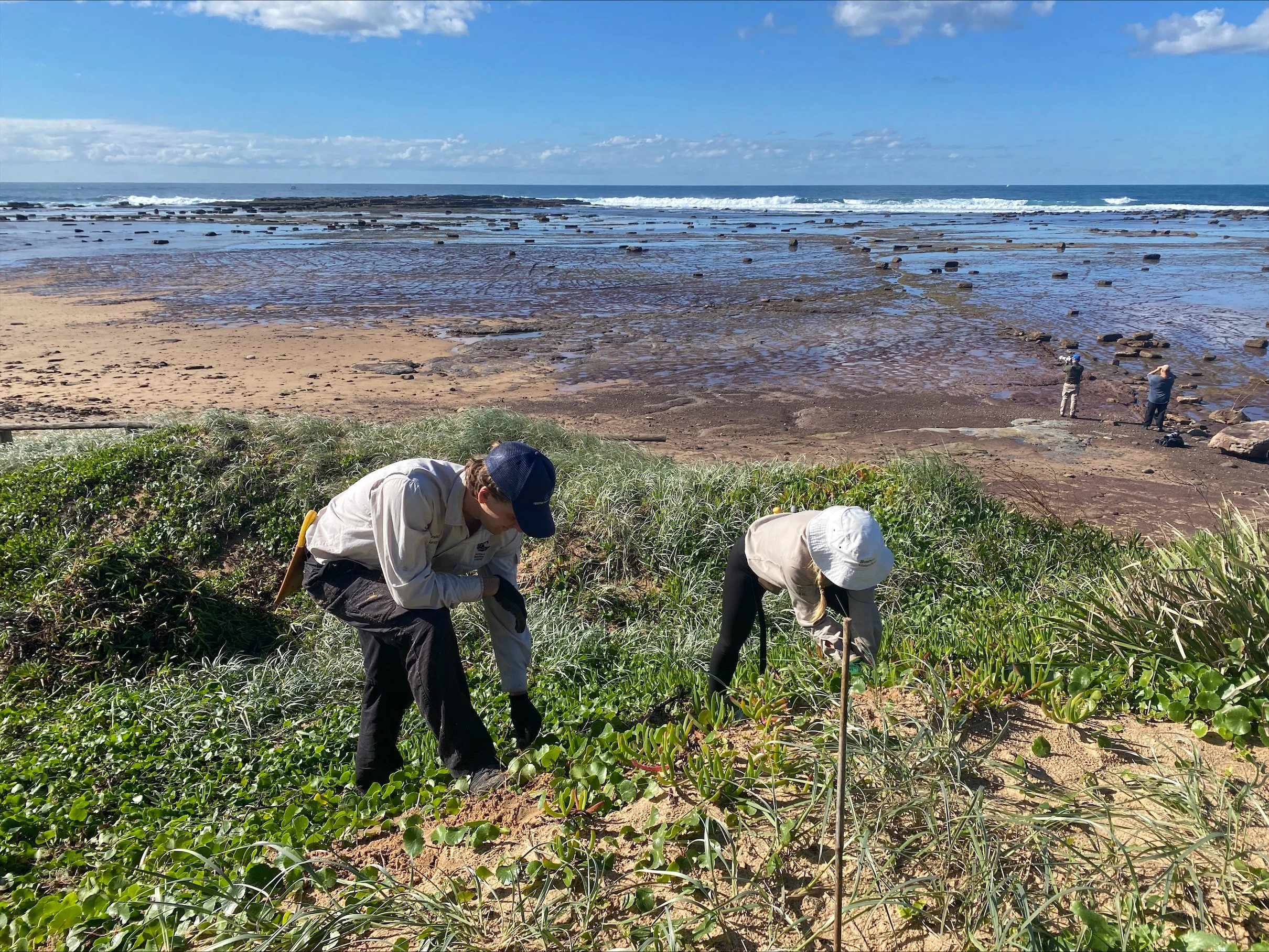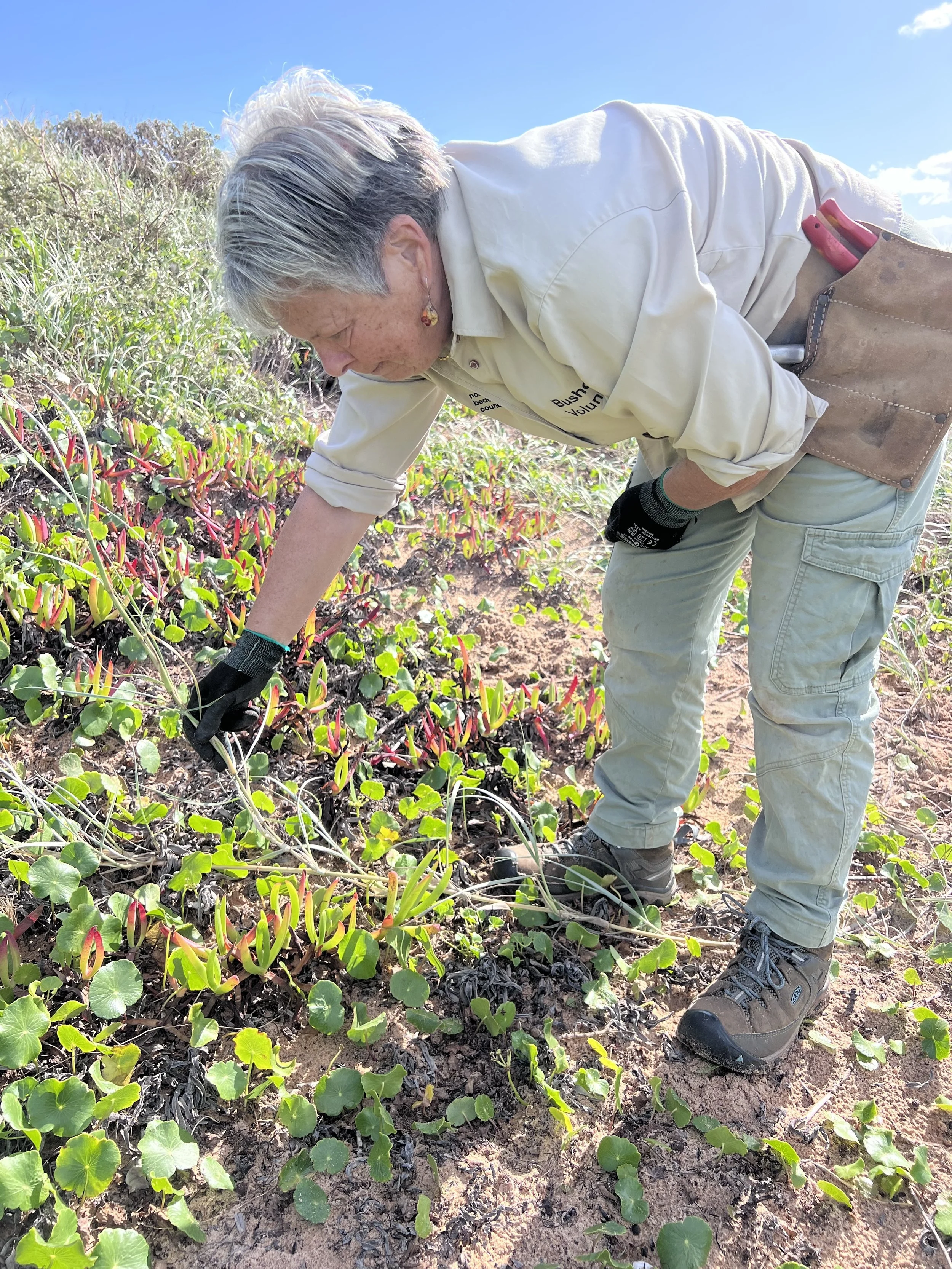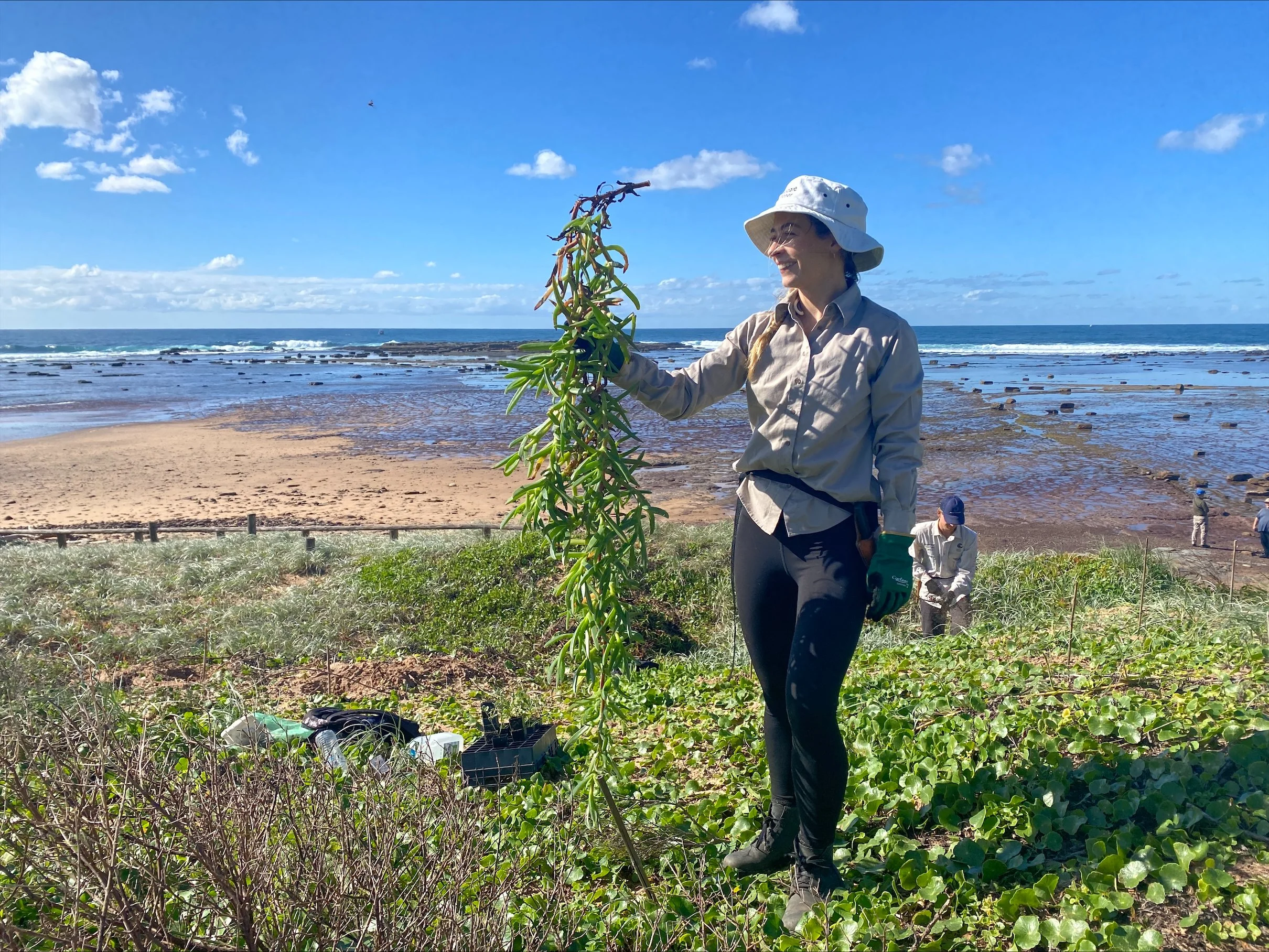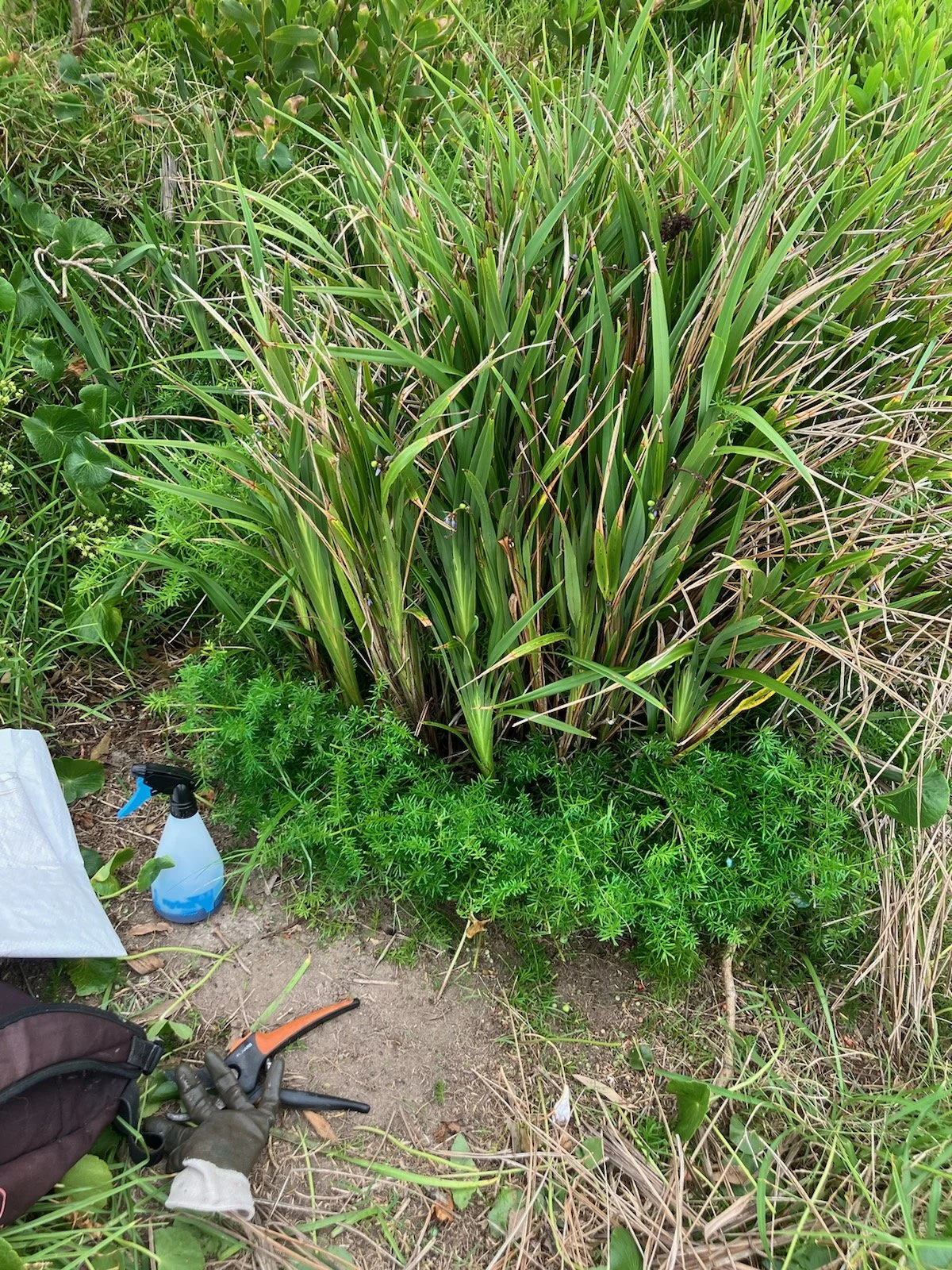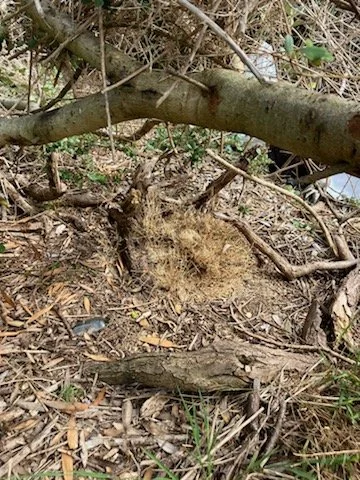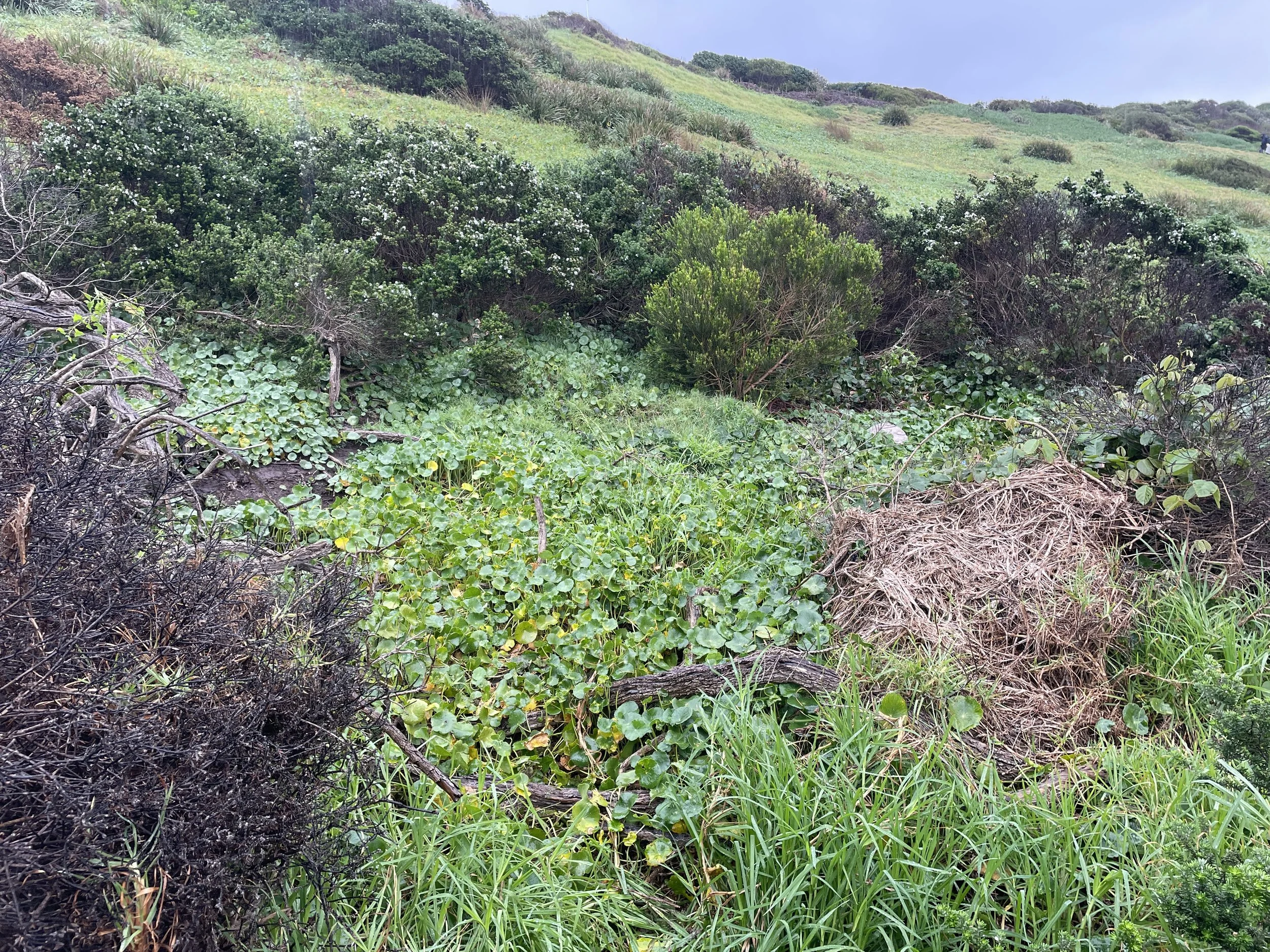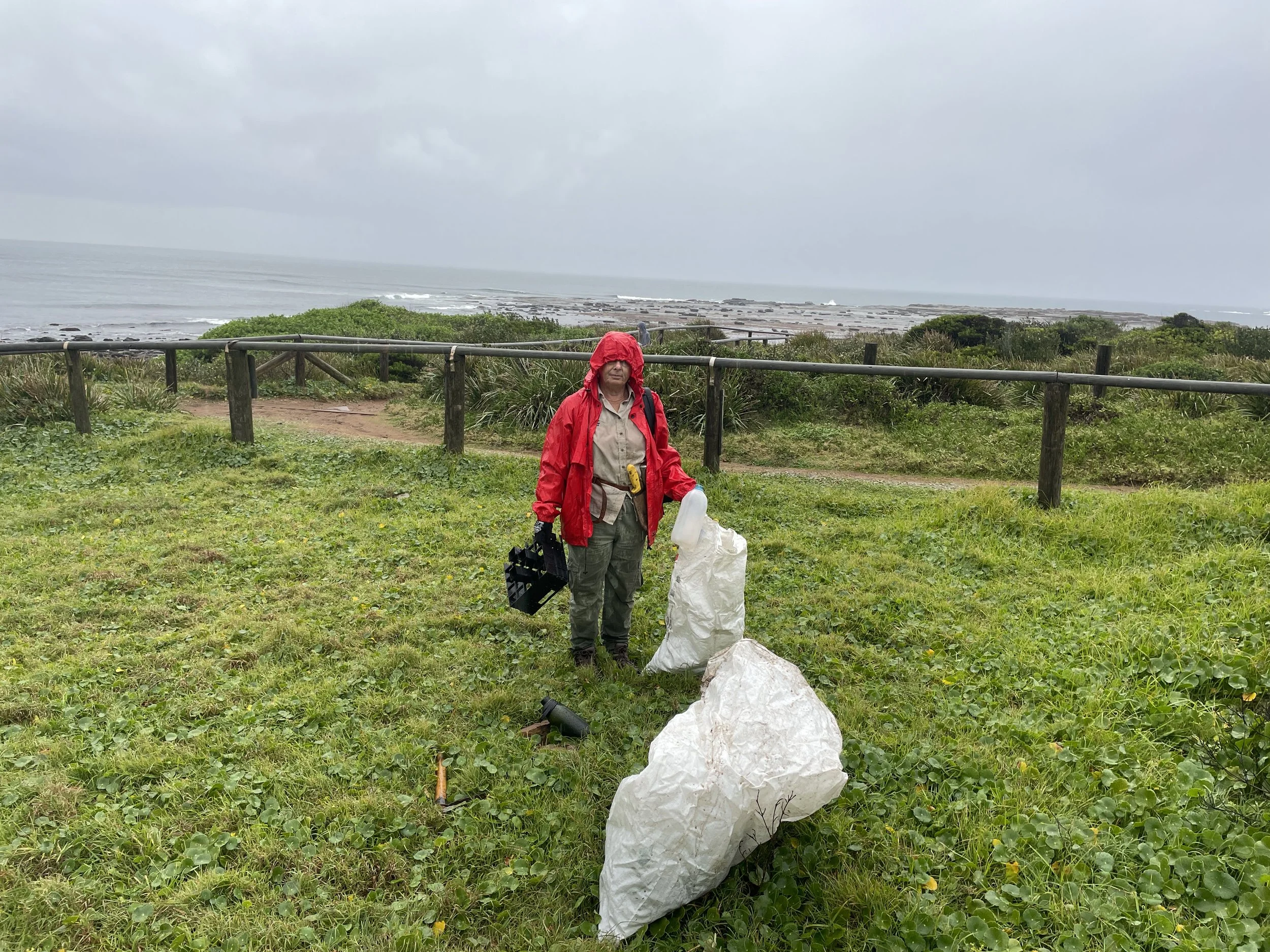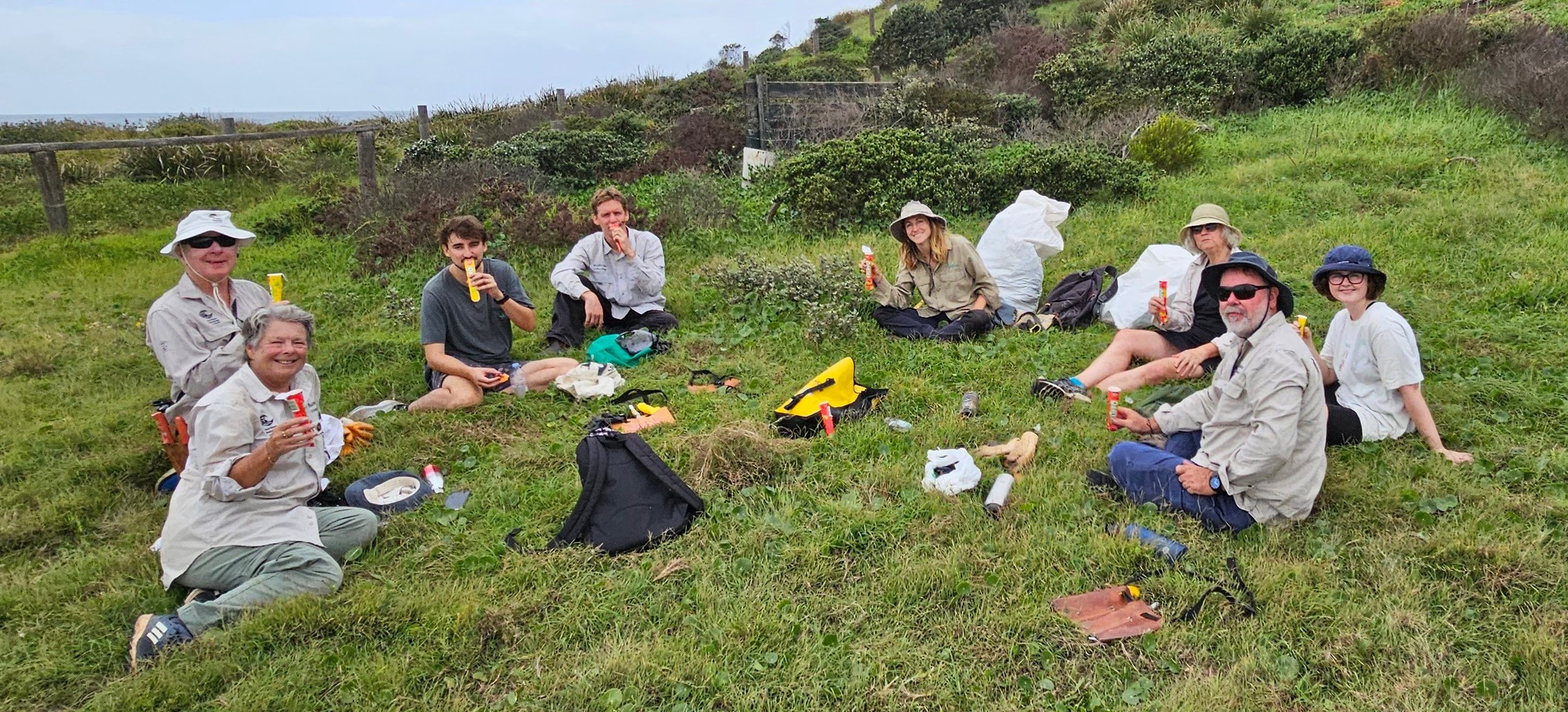
Blog
Beach Stone Curlew Spotted!
A beach stone curlew has been spotted at Long Reef Oct-Nov 2025 by numerous people, including Jim Rothwell who found it on the 12th of November on a small beach on the south side of Long Reef headland at 12.40 pm with rising tide. This bird is rare at Long Reef as it is Critically Endangered (CE) in NSW. Long Reef provides a protected environment for endangered and migratory bird species, which was a major reason this area was designated as a Marine Protected Area. Sightings like the beach stone curlew highlight the importance of protecting this habitat.
Beach Stone Curlew - Photo by Jim
A beach stone curlew also known as a beach thick-knee was first spotted at Long Reef in October 2025 and is currently still being spotted (29 November 2025). It caused quite a stir as everyone thought it was a one off, so there have been many bird spotters and photographers at Long Reef trying to find it.
Jim Rothwell was one of those that encountered the curlew: ‘On 12th November my wife Jennie and I saw a beach stone curlew on a small beach on the south side of Long Reef headland at 12.40 pm with rising tide. This area is a marine sanctuary and meant to be dog free which helps I’m sure.’
He also provided us with an extract from the NSW government website: https://threatenedspecies.bionet.nsw.gov.au/profile?id=10280
‘Description - The Beach Stone-curlew is a large, heavy-set wader (up to 56 cm in body length, and with a wingspan of up to 1.1 m), with a large-headed appearance, emphasised by its massive bill, strong legs and a short tail.
Distribution - In Australia, the Beach Stone-curlew occupies coastlines from about Point Cloates in Western Australia, across northern and north-eastern Australia south to north-eastern NSW, with occasional vagrants to south-eastern NSW and Victoria. In NSW, the species occurs regularly to about the Manning River, but recent records show a breeding pair is known from the Port Stephens area (Dowadee Island and Soldiers Point [mid-north coast]) and more recently the species has been recorded at Whale Beach in Twofold Bay near Eden. These new records extend the known limit of the normal range of the species in Australia to the far south coast of NSW. Surveys in 2000 put the NSW population at a minimum of 13 adult birds. Outside Australia, the species also occurs in south-eastern Asia, from the Malay Peninsula through Indonesia and southern New Guinea, east to the Solomon Islands, Vanuatu and New Caledonia.’
This bird is rare at Long Reef, as it is Near Threatened (NT) globally and Critically Endangered (CE) in NSW. Long Reef provides a protected environment for endangered and migratory bird species, which was a major reason this area was designated as a Marine Protected Area. Sightings like the beach stone curlew highlight the importance of protecting this habitat.
Text by Jim Rothwell and Misima
Reefcare Report: Weeding and Wildlife!
Our fabulous Reef Care crew worked through the light showers, removing bitou, asparagus fern, burr medic, thistles, asparagus fern, oat grass and bromus. The main highlight for the day was the wildlife, with fairy wrens, willy wagtails, 2 x white faced herons, a nankeen kestrel, a BEACH STONE-CURLEW and WHALES! We even saw a magpie kill and eat a ghost crab.
Karina and Jennie removing Burr Medic, Jim in back - Image by Lisa
Despite the inclement weather, 8 of us with our Supervisor Mahi turned up for what happened to be a wonderful wildlife experience day!
Our fabulous Reef Care crew worked through the light showers, and got to enjoy a morning tea with Mahi’s chocolate cake in sun/cloud and being harassed by our resident magpies; they are so used to us they come within 30cm, talking and singing.
Juvenile magpie
Julie at morning tea gave the group an update on how we will continue to remove Bitou which is now getting into difficult terrain, so this will be done with Council and Contractor assistance, where the contractors will do the hard work and Reefcare will do the follow up clearing and planting.
Most of the crew worked on weed removal, Julie and Merrilyn asparagus fern, Gen and Brad cutting back bitou, the rest of us working in a couple of areas at the bottom of the site, removing spent Burr Medic (it was still covered in seeds so worth the work bagging this to reduce the seed bank), thistles, asparagus fern, oat grass and Bromus. Jim and Mahi worked weeding around the contractor plantings just west of the main track.
Removing old Burr Medic that still had seeds
But this highlight for the day was the wildlife, with fairy wrens, willy wagtails, ladybirds, 2 x white faced herons, Nankeen Kestrel and WHALES! Jennie spotted them first, there was a mother and baby which seem to just go around the whale watching boat – they must have had a wonderful viewing, the whales were so close, and another a little further out, slapping it’s tail. On the way back a number of us got to watch a magpie kill and eat a ghost crab – that was certainly something to watch – only a foot away from us.
Superb fairywren and ghost crab - Photos by Misima
The bird photographers were all out as a beach stone-curlew (Esacus magnirostris) had been sighted at Long Reef only two days before, these birds are seriously rare now as there are limited sites for breeding due to human development along the coast. The birds form a nest in sand, laying one egg per season just above the high tide line on the open beach, where it is vulnerable to predation and human disturbance.
We finished the day with several very full weed bags, as some of the Burr Medic can grow to quite a size. Other weeds that were targeted were blackberry nightshade, various thistles and of course – asparagus fern!
Text by Lisa
Reefcare Report: Tackling Burr Medic, Oat grass, Bromus
A sunny day greeted the small team who had stayed behind for the October Long Weekend. Julie worked on clearing asparagus fern at the top, while the rest of the group focused on weeding Burr Medic, oat grass, Bromus along the path and main site area. Morning tea included caramel cake from Mahi, and several full weed bags were collected by the end of the day.
Lovely Site photo: clouds and sea are aligned - Photo by Mahi
A lovely sunny day greeted the few of us, that had not gone away for the October Long Weekend; which meant that we did not have the boots on the ground to plant the Carpobrotus tube stock which we had brought along… always another time.
Julie continued to work up the top on asparagus fern as she has done for many, many months, slowing moving further west as she clears an area. Up the top of the site near where Julie is working a red wattlebird was seen - they like the Banksia, so we don't see them further down Long Reef point and on our grassland site.
Julie working on Asparagus fern - Photo by Mahi
Red Wattlebird - Photo by Mahi
The rest of the team, Mary, Arthur, Mahi and myself did some weeding on our site along the path where there was a great array of weeds; before then saying, let’s get onto our real site area where we worked on Burr Medic as well as oat grass and Bromus. The Burr Medic is not quite as bad as previous years, so hopefully now the targeting of the last dozen years is now starting to pay off.
The Oat grass and bromus this year are also far less numerous than the previous few years, which is unusual for this time of year. Has the weather not been good for these weeds? Has our past few years attention in targeting these weeds managed to reduce the number? Wish I knew the answer – let’s hope it means our past several years’ work targeting this weed has worked.
Below are two holes dug in the dirt which we have now been finding for about a year now, we think these are from bandicoots. - Photos by Mahi
We stopped for morning tea at 10:30am - Mahi brought us a beautiful caramel cake for morning tea and some fruit juice.
Arthur, Mary and Lisa at morning tea, waiting for the caramel cake to arrive!
We finished the day with several very full weed bags, as some of the Burr Medic can grow to quite a size. Other weeds that were targeted were blackberry nightshade, various thistles and of course – asparagus fern.
Text by Lisa
Reefcare Report: Raptors, Planting and Weeding
A lovely sunny day greeted the Reefcare team which included two new volunteers, Maria and Shaan. 12 native Carpobrotus were planted at the top of the N/W slope. While raptors flew overhead, volunteers worked on removing Asparagus fern, Bitou, Gladioli, Burr Medic and Turkey Rhubarb.
Our volunteer team enjoying morning tea - (Shann, Mahi, Denise, Arthur, Mary, Stefanie, Karina, Gen, Brad, Merrilyn, Maria, Misima, Lisa, Paul)
A lovely sunny day greeted the Reefcare team together with Georgia from NBC who introduced the team to Paul – our Supervisor for the day, and Mahi (both from Dragonfly Environmental) who will take over the usual monthly supervision, now that Kathy is on maternity leave. On site, Georgia ran through the Site Plan with Mahi and any other volunteers who wanted to attend.
Brad and Gen worked on the Bitou, whilst Merrilyn scouted the site for Gladioli, Asparagus fern, small Bitou and Burr Medic.
Lisa set up Stefanie, Karina, Misima, Denise and Paul to weed the top n/w slope and then make terraces and plant 12 native Carpobrotus, before heading down the slope where Georgia had the rest of the team weeding on the flat.
Planting Carpobrotus on slope - Misima, Stefanie, Karina, Denise, Paul
Lisa spent some time there with 2 new volunteers, Maria and Shaan pointing out the weeds in this area and what to bag to remove from site and what can be left to rot for mulch.
Mary wanted an area that she is able to dedicate herself to on the flat, so with Arthur, I allocated the n/e dunes which was full of Burr Medic.
When the season is over for this weed, Mary and Arthur can then move to the eastern dunes to maintain the 2 demarcation lines to stop the non-native pigs face getting into the eastern flat and the kikuyu moving south into a really good patch of Kangaroo Grass.
Paul brought us some lovely fresh fruit and a cake for morning tea. After morning tea, Lisa with Stefanie, Karina, Shann, Maria, Misima and Mahi worked back and forth along the main slope removing Asparagus fern, small Bitou and Burr Medic – until we got to the top where Mahi worked on Turkey Rhubarb and the others cleaning up any non-native pigs face from our previous cleared area – which is looking fabulous with a grassy cover, so no erosion issues.
Denise weeding Blackberry nightshade (Solanum nigrum)
It was a great day for bird watching as we saw a white bellied sea eagle, osprey and a nankeen kestrel of which Stefanie got some great video footage.
We also had a police helicopter constantly flying over, looking for the shark around the reef, who had at 9:30am attacked a surfer and Dee Why/Long Reef beach, killing him.
There was very little oat grass and/or Bromus this month which is unusual for this time of year – has the weather not been good for these weeds? Has our past few years attention in targeting these weeds managed to reduce the number? Wish I knew the answer – let’s hope it means our past several years’ work targeting this weed has worked.
Text by Lisa
Reefcare Report: Bad Weather
Unfortunately, Reefcare had to be cancelled prior to our working day due to windy and rainy weather – the weather in Sydney over the past few weeks had been awful, so the cancellation was certainly no surprise.
Unfortunately, Reefcare had to be cancelled prior to our working day due to windy and rainy weather – the weather in Sydney over the past few weeks had been awful, so the cancellation was certainly no surprise.
Reefcare Report: More Weeding!
Two new volunteers joined our Reefcare team! We continued weeding invasive pig’s face and removing asparagus fern crowns and berries to prevent further spread. We were joined by magpies, ospreys, welcome swallows and a cool insect.
Volunteers weeding non-native pig’s face
It was a mostly sunny morning this session where we welcomed two new volunteers to the Reefcare team!
While we worked, there were several ospreys flying around and were surrounded by lots of welcome swallows and magpies. We also found a Giant Green Slantface insect that was very hard to spot as it was completely camouflaged as a blade of grass.
Osprey flying at Long Reef
Giant green slantface camouflaged in grass
We mainly concentrated on continuing the weeding of non-native pigsface particularly targeting areas where it was crowding native species. We created a gap between 0.5-1m to allow them to grow without competition and recover.
Arthur and Mary weeding non-native pig’s face – Photo by Stefanie
At the top of the hill two volunteers worked on continuing to prevent asparagus fern spread. We removed some of the smaller crowns but mainly focused on removing the berries to prevent new plants from establishing in other areas of the site via birds. Misima said: “You will not believe the amount of berries that we collected and bagged.”
Another pair worked steadily across the slope, pulling out smaller asparagus ferns wherever they found them, as well as any other invasive weeds that had popped up.
Volunteers removing invasive weeds from grass slope – Photo by Stefanie
Text by Misima
Reefcare Report: Weed removal and Wildlife
Volunteers spent June’s working bee tackling invasive pig’s face and asparagus fern while planting new natives. Along the way, they spotted a rare snail, a bandicoot burrow and new invasive plant called African fireweed.
Beautiful shot of Long Reef rock platform and grass slopes
The June working bee's primary focus was pulling out non-native pig’s face and planting a tray of 30 plants around the western area of the site.
The weather was perfect, we were welcomed by lots of wildlife. We have found evidence of a bandicoot as there is a burrow along the slope. We found a fuller’s rose weevil while weeding pig’s face. We also found a new sapling of banksia under a tea tree and unfortunately found a new weed has been introduced to the site, called the African fireweed. Two Ospreys flew over who had caught a fish each and magpies foraged nearby hoping to catch worms in the unearthed soil.
Self Seeded Banksia Found under a Tea Tree – Photo by Stefanie
Australian Magpie standing on dead pig’s-face - Photo by Stefanie
We pulled out a large amount of pig’s face on the slope. You can tell it is non-native by the long green leaves which are like a carpet over smaller native plants.
Karina weeding Pigs Face – Photo by Stefanie
The Maroubra snail was first discovered on site two years ago, it is very rare and found again today, it has a brown shell.
Maroubra Snail on leaf – Photo by Brad
There was a fire ant nest nearby where we were planting meanwhile placing water crystals in the soil.
Julie did a bag of asparagus crowns and either dug or poisoned them: “I continued working in the area below the Whale Sculpture, focusing on the removal of Asparagus Fern. Where the plants were easily accessible, I cut around the crown with a jab saw, and cut off stems, roots and the globular water nodules.”
The first photo shows a trimmed crown about to be cut out. It is only the crown that needs to be removed. The second photo shows trimmed crowns on the bag.
“Where the plant is growing under native bush or other obstacle, I join stems into a ' ponytail', trim the top, scrape the stems and spray with glyphosate.” The third photo shows some 'ponytails' tinged blue with glyphosate. “These will be checked next time I'm on site. I'm confident of asparagus death!”
Text by Stephanie
Reefcare Report: A Lucky Break in the Weather 🌿🌞
A sunny break in the rain gave our Reefcare volunteers the perfect window to get stuck into weeding, planting, and caring for the dunes at Long Reef. Another great morning of teamwork and restoration in action.
Early start, big impact. Our amazing Reefcare crew gearing up in the carpark before heading out to protect and restore Long Reef’s dunes and bushland.
After a week of rain, we were lucky to have a beautiful, sunny day with barely any wind — perfect conditions for our working bee. Denise, Misima, Kathy, and Lisa spent the morning in the eastern dune area, with Alex joining after doing some follow-up on Turkey Rhubarb and Asparagus Fern. We continued removing non-native Pigface from the small bowl-like area we began restoring three months ago and planted 20 tube stock in the space.
Volunteers got their hands dirty removing Pigface, tackling Asparagus Fern, and planting native tube stock to help restore the dunes.
Despite the spread of Hydrocotyle bonariensis due to recent rains, we’re confident our new plantings will thrive and outcompete, as it’s the growing season.
Julie focused her efforts at the top of the site, tirelessly working to remove Asparagus Fern — crowning, scraping, and poisoning where needed — and also cleared more Pigface from that area.
Merrilyn was on the move across the site on her own Asparagus Fern mission. It’s everywhere — about one every step or two — but thanks to her vigilance, we’re catching many of them early while they’re still small.
Gen and Brad worked down in the gully, cutting back Bitou where full removal isn’t possible due to the fragile cliffs, and continued clearing Pigface from our planting zones.
We were joined at morning tea by Michael Kneipp from Northern Beaches Council, who visited to discuss two key areas of concern. He was pleased with the progress in the eastern dunes but shared some reservations about sections in the far western part of the site. Lisa and Kathy assured him that Reefcare will take these concerns into account in planning and prioritising future work, particularly around the western gully.
Refuel and reconnect. Our Reefcare team pausing for morning tea after a solid few hours of conservation care at Long Reef.
A big thank you to everyone who came out — your dedication is making a real difference. 💚
Reefcare Day Report: A day of planting new seedlings
On a warm but overcast morning, twelve keen volunteers gathered at the carpark, with 50 seedlings to set free into the wilds of Long Reef …
Stephanie and Karina prepare the ground to plant some tube stock
On a warm but overcast morning, twelve keen volunteers gathered at the Long Reef carpark. With fifty seedlings, lots of tools, bottles of water and twelve people, it took some organising to work out how to best target the two planting areas we wanted to tackle.
Once out onto the site, Lisa, Stefanie, Karina, Bec and Elias planted seedlings around the Lomandra longifolia on the northern dune, before joining Brad and Gen on the high western slope. Here, they planted the balance of the tube stock around the gully and the western side of cleared Bitou. The sandy soils here required them to build terraces with old bitou branches. The ground preparations are vital to encourage any rainfall to stay in the tube stock area.
Correa alba, taken out of the tube and ready for planting. We have never seen wombats on our site but they would like these. Photo by Stephanie.
Here is hoping we have some rain in the next three to four days; otherwise, Des and Lisa will be struggling down the slopes with 8+ litres of water each, to help our newly planted seedlings get established in the sandy soil.
While Brad and Gen were planting the stock, they also collected some of the lush and lovely Commelina cyanea, to transplant around the more western part of the site. The extra ground cover should help prevent erosion of the sandy soil, until the newly planted natives get established.
Julie’s focus was the top area below the whale sculpture where the asparagus fern is growing through the thick grass, dianella clumps and acacia/ correa scrub. Where the asparagus fern is enmeshed in and ringing the dianella, she removed seed, pruned it back and then sprayed with blue dyed glyphosate.
Julie sprays glyphosate on the asparagus fern that has encircled the daniella plant. We usually do not like to use glyphosate, but in this case, removing the plants manually would cause major damage to the daniella. Photo be Julie.
Dead asparagus fern. Photo by Julie
This type of work in ongoing. Last month Julie re-sprayed two large crowns of asparagus fern which had regrown thickly. This time, both crowns are dead, but will need to be checked again next month. Clearly, they are resilient !!
Julie is aiming to find the best method of asparagus fern eradication which requires low energy by volunteers, but has high impact on the plant.
Bright green asparagus fern. Photo by Julie.
Julie advises that removal of the seeds by running a gloved hand along the stem means less weight to carry off the site. Making a 'ponytail' bunch of the Asparagus Fern stems means spraying is focussed and not wasted.
Canavalia Rosea mature pod with a few seed pods still in situ. It is great to watch the lifecycle of these plants, from pink flowers, to big green seed pods and now ready to set seed again. Photo by Stefanie.
In addition to planting the seedlings, we still needed to keep the weeds at bay, so Julie, Merrilyn and Des worked on asparagus fern and Bitou around the site. This is a constant source of work as there are hundreds of these sprouting up, especially with the asparagus fern seeds being dropped by birds. Once Alex moved to the high slop area, Mary who has to be careful of her ankle worked on asparagus fern.
Morning tea below the old bundles of pigs face, with a view over the ocean. Photo by Lisa.
Alex and Mary worked on turkey rhubarb removal. Alex found more sites of turkey rhubarb to eradicate, which was very upsetting news as we thought we just had a few sites to monitor. From past experience, we know that any infested area needs to be monitored for months to years as dormant seedlings suddenly burst into life. We suspect that the seeds are being blown in from the infested Long Reef dunes, south of our site.
After the planting was finished many of the group worked on ridding the gully of the non-native pigs face. This weed would otherwise smother our earlier plantings. With Brad, Gen, Lisa, Elias, Stefanie, Karina, Alex, Bec and Denise working together, they managed to clear a good-size area. We will need a follow up next month, but I surmise it won’t take long, and we can move onto the eastern slope of the gully, to join it up with the larger cleared area from last year.
Elias shows how to build terraces on the steep sandy slope, before planting Westringia fruticosa tube stock. Photo by Stephanie.
We bundled the non-native pigs face into piles. These flatten down as they dry out, providing good ground cover on the steep sandy slopes. Photo by Lisa.
In the afternoon, as we left the site and passed the area we worked on last year, we were thrilled to see the plantings had thrived. The space looked vibrant and healthy. We may be able to add more plants here, perhaps a task for next month.
Text by Lisa.
Reefcare Day Report: Weeding in the rain
Five of us met at the carpark in very inclement weather together with our Dragonfly Supervisor for the day …
Five of us met at the carpark in very inclement weather together with our Dragonfly Supervisor for the day, Paul; plus 25 plants to get in the ground before the rain really came in – which we expected around 11:00am.
Julie continued up the top removing more Asparagus Fern whilst Des and Brad headed to the high western slope where previous non-native pigs face has been removed to plant 18 of the plants to add to previous plantings over the last few months. They then moved to the western area of the site cutting bitou and throwing onto previous cleared ground so that it can break down and be used for future mulch on site and cover exposed sand to keep moisture in and prevent any possible erosion.
Bitou bush that was poisoned in last month's bushcare session is dying, but the native plants (Myoporum) are thriving! Great outcome!
Alex with mattock and weed bag in hand, headed back to the nest area as unfortunately more turkey rhubarb has appeared within a number of black berry nightshade (Solanum nigrum) with green berries which have appeared on mass in this area as well as Hydrocotyl (Hydrocotyle ranunculoides) - which is also growing all around the site like it’s been fed steroids. Paul worked on the turkey rhubarb on the flat and other general site weeding, whilst Lisa headed to the eastern dunes to plant Lomandra along the tracks where the surfers are cutting through the Reefcare site of good Themeda, and general weeding – Burr Medic coming up but not yet burrs appearing – early for this weed, as it is usually around August.
Return to the nest: some minor turkey rhubarb plants were observed in the nest, some of which were seeding. These were promptly removed and bagged.
Turkey Rhubarb bagged and disposed of.
The rain started lightly sometime after 10:00am, but we put on rain jackets and kept working until 10:30 when it started to get heavier and looked like it was set in – so after meeting Maria in the carpark – great timing Maria! Des, Julie, Lisa and Maria when to a coffee shop and sat around a heater they had to dry out – whilst Paul our Dragonfly Supervisor decided to complete the Green Link walk around Long Reef, as he had not been in this area before – good on you Paul, hope you got back in time before it poured down about 11:15am!
Drowned rats Lisa & Alex working in the rain just before the session was canned.
We leave the site in peace as the rain comes in.


